|
Sunday:
January 13, 2002 | |
0032 GMT |
 |
First steps in terrestrial planet formation observed?
Astronomers say they have discovered what may be "planetesimals" -- precursors of Earth-like planets -- forming at Earth-like distances and temperatures around a Sun-like star 430 light years away.
 FULL STORY FULL STORY
 |  |

|
 |
Young star blasts its way out of stellar nursery
A young star is apparently blasting high-speed gas jets from its poles, carving a void through the dense molecular cloud that was its birthplace, according to an international team of astronomers. The observation indicates that the jets are more common and last longer than supposed.
 FULL STORY FULL STORY
 |  |
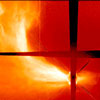
|
 |
Radioactive decay of elements gives age of stars
Gold, silver, platinum and other exotic heavy elements forged in the explosions of massive stars are leading the way to understanding the birth of elements in our Milky Way galaxy.
 FULL STORY FULL STORY
 |  |

|
 |
|
Saturday:
January 12, 2002 | |
0001 GMT |
 |
Planet around the star Vega suggested in dust swirl
Astronomers announced this week that features observed in the dust swirling around the nearby star Vega may be the signatures of an unseen planet in an eccentric orbit around the star.
 FULL STORY FULL STORY
 |  |

|
 |
Mars Odyssey successfully completes aerobraking
NASA's Mars Odyssey spacecraft fired its small thrusters early Friday, raising the probe up out of the atmosphere to conclude the aerobraking portion of the mission. Aerobraking is considered the most complex phase of the entire Odyssey voyage.
 FULL STORY FULL STORY
 |  |

|
 |
A new way to find distance of gamma-ray bursts
Astronomers at Rice University in Houston have discovered that the rate at which a gamma-ray burst cools might be used to calculate the distance of that burst. The researchers believe that this additional technique will enable scientists to learn more about the evolution of the early universe.
 FULL STORY FULL STORY
 |  |

|
 |
DAILY BRIEFING Other stories making news today
|
 |
Astronomers set new limits on gravitational wave background -- An unsuccessful search for anomalies in the flashing of a millisecond pulsar over the past 17 years puts a new limit on the amount of gravitational radiation in the universe and brings astronomers closer to detecting signals from gravitational waves.
|
 |
|
Friday:
January 11, 2002 | |
0525 GMT |
 |
Titan 4 rocket to launch fifth Milstar Tuesday
The U.S. Air Force and Lockheed Martin are preparing to launch the next in a series of Milstar satellites that serve as sophisticated communications switching stations in space, relaying vital information between the government authorities and military forces around the globe.
 MISSION STATUS CENTER MISSION STATUS CENTER
 |  |

|
 |
Color of the universe
If the universe has a distinctive color, it would be a shade of bluish green, astronomers announced Thursday. Astronomers from Johns Hopkins University reached this conclusion after studying the light from over 200,000 galaxies.
 FULL STORY FULL STORY
 SCIENTISTS' NEWS RELEASE SCIENTISTS' NEWS RELEASE
 |  |

|
 |
Radiation zaps planets, affects biological evolution
Calculations by a team of astronomers at The University of Texas at Austin show that jolts of radiation from space may affect biological and atmospheric evolution on planets in our own solar system and those orbiting other stars.
 FULL STORY FULL STORY
 |  |
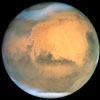
|
 |
Unraveling the first steps in how stars form
The first-ever map of all sites of star formation in a spiral galaxy reveals the important role played in the earliest steps of star formation by magnetic fields in the gas between stars.
 FULL STORY FULL STORY
 |  |
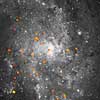
|
 |
Astronomers find evidence of black holes' missing link
In the last decade or so, supermassive black holes at the centers of galaxies have become an accepted part of the astronomical landscape, as have the small, stellar-mass black holes found farther from the center. Missing has been any solid evidence of an intermediate mass black hole, an entirely new astronomical object that would be the missing link in the black hole chain.
 FULL STORY FULL STORY
 |  |

|
 |
|
Thursday:
January 10, 2002 | |
0519 GMT |
 |
Sun is mostly iron, not hydrogen, professor says
For years, scientists have assumed that the sun is an enormous mass of hydrogen. But in a paper to be presented today at the American Astronomical Society's meeting, Dr. Oliver Manuel says iron, not hydrogen, is the sun's most abundant element.
 FULL STORY FULL STORY
 |  |

|
 |
Chandra takes in bright lights, big city of Milky Way
NASA's Chandra X-ray Observatory has made a stunning, high-energy panorama of the central regions of our Milky Way galaxy. The findings are an important step toward understanding the most active area of the Milky Way as well as other galaxies throughout the universe.
 FULL STORY FULL STORY
 |  |

|
 |
SOHO's private view of a sunbathing comet
You could see it easily with your unaided eye if only Comet Machholz 1 were not so very close to the Sun. This unusual comet, reputed to flare up a lot, is today sweltering only 18 million kilometers from the Sun. This is its closest approach on an orbit that brings it back to the solar vicinity every 63 months. The best and perhaps the only view of it at this time comes from the sunwatching spacecraft SOHO.
 FULL STORY FULL STORY
 |  |

|
 |
|
Wednesday:
January 9, 2002 | |
0449 GMT |
 |
Bush science advisor says station needs major reforms
The International Space Station program could be in serious jeopardy if it cannot correct its management problems in the near future, President George W. Bush's science advisor said Tuesday.
 FULL STORY FULL STORY
 |  |
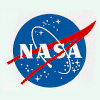
|
 |
Hubble suggests first stars opened in a blaze of glory
The deepest views of the cosmos from NASA's Hubble Space Telescope yield clues that the very first stars may have burst into the universe as brilliantly and spectacularly as a fireworks finale. In this case though the finale came first, long before Earth, the Sun and the Milky Way Galaxy formed.
 FULL STORY FULL STORY
 |  |
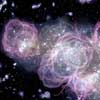
|
 |
Shock zone found where planets are born
In research that may help reveal how planets form, astronomers have gathered evidence that a shock is created when material falls in toward a dust disk around a growing star.
 FULL STORY FULL STORY
 |  |

|
 |
Chandra finds ghosts of eruption in galaxy cluster
"Ghostly" relics of an ancient eruption that tore through a cluster of galaxies were recently uncovered by NASA's Chandra X-ray Observatory. The discovery implies that galaxy clusters are the sites of enormously energetic and recurring explosions, and may provide an explanation why galaxy clusters behave like giant cosmic magnets.
 FULL STORY FULL STORY
 |  |
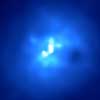
|
 |
|
Tuesday:
January 8, 2002 | |
0511 GMT |
 |
Launch of Hubble servicing mission rescheduled
As expected, NASA officials are delaying by another week the planned launch of shuttle Columbia on the 11-day mission to service and upgrade the Hubble Space Telescope, sources said Monday. Liftoff is now set for February 28 at 6:53 a.m. EST. The mission has been pushed back two weeks so the replacement of a suspect pointing device inside Hubble could be added to the flight.
 WORLDWIDE LAUNCH SCHEDULE WORLDWIDE LAUNCH SCHEDULE
 |  |
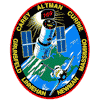
|
 |
Discoveries raise hopes for exoplanet searches
The discoveries of a brown dwarf and a circumstellar disk make it increasing likely that telescopes will soon be able to directly observe Jupiter-sized planets orbiting other stars, astronomers said Monday.
 FULL STORY FULL STORY
 |  |
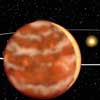
|
 |
Astronomers snap image of Universe's fiery youth
Like a hyperactive child, the Universe had an energetic youth, according to a new result using data from the Two-Micron All Sky Survey (2MASS). Light emitted by the young Universe has been detected with the survey. The intensity of this light, called the Cosmic Infrared Background radiation, is two to three times what is expected based on observed galaxies.
 FULL STORY FULL STORY
 |  |

|
 |
Chandra puts further limits on nature of dark matter
NASA scientists using the Chandra X-ray Observatory have measured the distribution of dark matter in an elliptical galaxy on the smallest scale yet and found that this mysterious substance exists in high concentrations throughout most of galaxy.
 FULL STORY FULL STORY
 |  |

|
 |
'Big Glitcher' pulsar reveals long-hidden, exotic interior
Scientists see a few glitches in an otherwise flawless spin of a pulsar, and this is a good thing. These glitches, a term given to the sudden change in pulsar spin frequency, are revealing the strange physics of the high-pressure interior of the pulsar, a long-standing mystery. A pulsar named PSR J0537-6910 appears to have the highest rate of glitches of any known pulsar.
 FULL STORY FULL STORY
 |  |
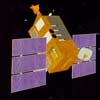
|
 |
|
Monday:
January 7, 2002 | |
0238 GMT |
 |
Shuttle astronauts to give Hubble telescope makeover
Taking a break from space station assembly work, NASA is gearing up for the next Hubble Space Telescope servicing mission, a high-stakes five-spacewalk flight in February to install new solar arrays, a critical power switching unit and a new camera to extend the observatory's scientific reach.
 FULL STORY FULL STORY
 |  |
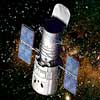
|


 Astronomy Now and Spaceflight Now present a 100-page, full-color special publication: 2001: a Year in Space. A stunning month-by-month pictorial record of the space events and discoveries during 2001. Available now from our store.
Astronomy Now and Spaceflight Now present a 100-page, full-color special publication: 2001: a Year in Space. A stunning month-by-month pictorial record of the space events and discoveries during 2001. Available now from our store. The Hubble Space Telescope's majestic view of the Eskimo Nebula. This spectacular poster is available now from the Astronomy Now Store.
The Hubble Space Telescope's majestic view of the Eskimo Nebula. This spectacular poster is available now from the Astronomy Now Store.